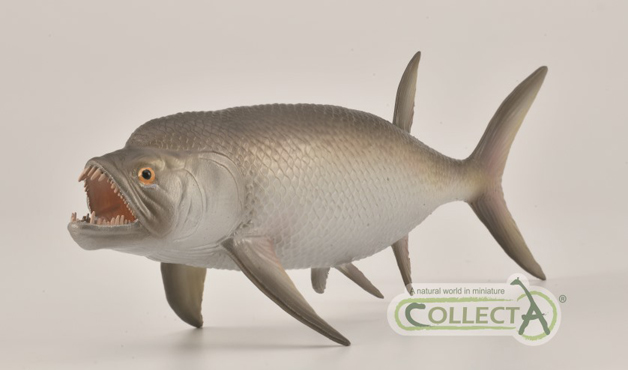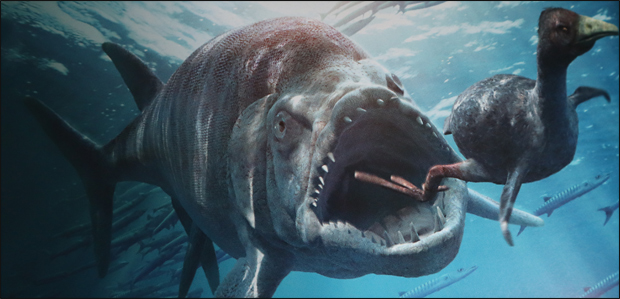The Voracious Xiphactinus was More Widespread than Previously Thought
Xiphactinus (pronounced zee-fak-tin-us), was a fast swimming voracious predator of Cretaceous seas. With a body length of up to six metres, this bony fish was one of the top predators associated with the Western Interior Seaway of North America. It has a formidable reputation amongst palaeontologists, as several fossils have been found which show the undigested body parts of prey, preserved inside the stomach cavity. Perhaps, the most famous specimen that documents predatory behaviour is the Xiphactinus (X. audax), with the complete skeleton of a 1.8 metre-long fish preserved inside its skeleton which is on display at the Sternberg Museum of Natural History (Kansas).
A Voracious Predator
A Bony Fish with a Fearsome Reputation

A team of scientists have reported this week the first occurrence of Xiphactinus from southern South America. Writing in the academic journal “Alcheringa”, researchers from the Museo Argentino de Ciencias Naturales “Bernardino Rivadavia” in collaboration with a colleague from Universidad Maimónides, both located in Buenos Aires, report the discovery of fragments of upper jaw bone (maxilla), as well as vertebrae from the Salamanca Formation (Chubut Province, Argentina). It is estimated that this fish lived around 70 million years ago (Maastrichtian age of the Late Cretaceous).
Xiphactinus Geographically and Temporally Widespread
Xiphactinus has been widely reported from Upper Cretaceous strata throughout the Northern Hemisphere, although to date, equivalent discoveries in the Southern Hemisphere have been limited to a single fossil specimen consisting of elements from the skull and the spine from the Cenomanian aged limestones of the La Aguada Member, La Luna Formation, near Monay, Candelaria Municipality in western Venezuela.
A Life Reconstruction Xiphactinus
The picture (above) shows a CollectA Deluxe Xiphactinus model.
To view the CollectA Deluxe range of prehistoric animals: CollectA Deluxe Prehistoric Life Models.
This discovery extends the known geographical range for this genus and suggests that this teleost was widespread during the Cretaceous (Albian to Maastrichtian faunal stages). It is related to the majority of fish species alive today, although the entire family of these types of predatory fish (Ichthyodectidae), became extinct at the end of the Cretaceous.
A Bony Fish with a Formidable Reputation
The scientific paper: “First record of the ichthyodectiform fish Xiphactinus (Teleostei) from Patagonia, Argentina” by Julieta J. De Pasqua, Federico L. Agnolin and Sergio Bogan published in Alcheringa: An Australasian Journal of Palaeontology.
Visit the Everything Dinosaur website: Everything Dinosaur.








Leave A Comment